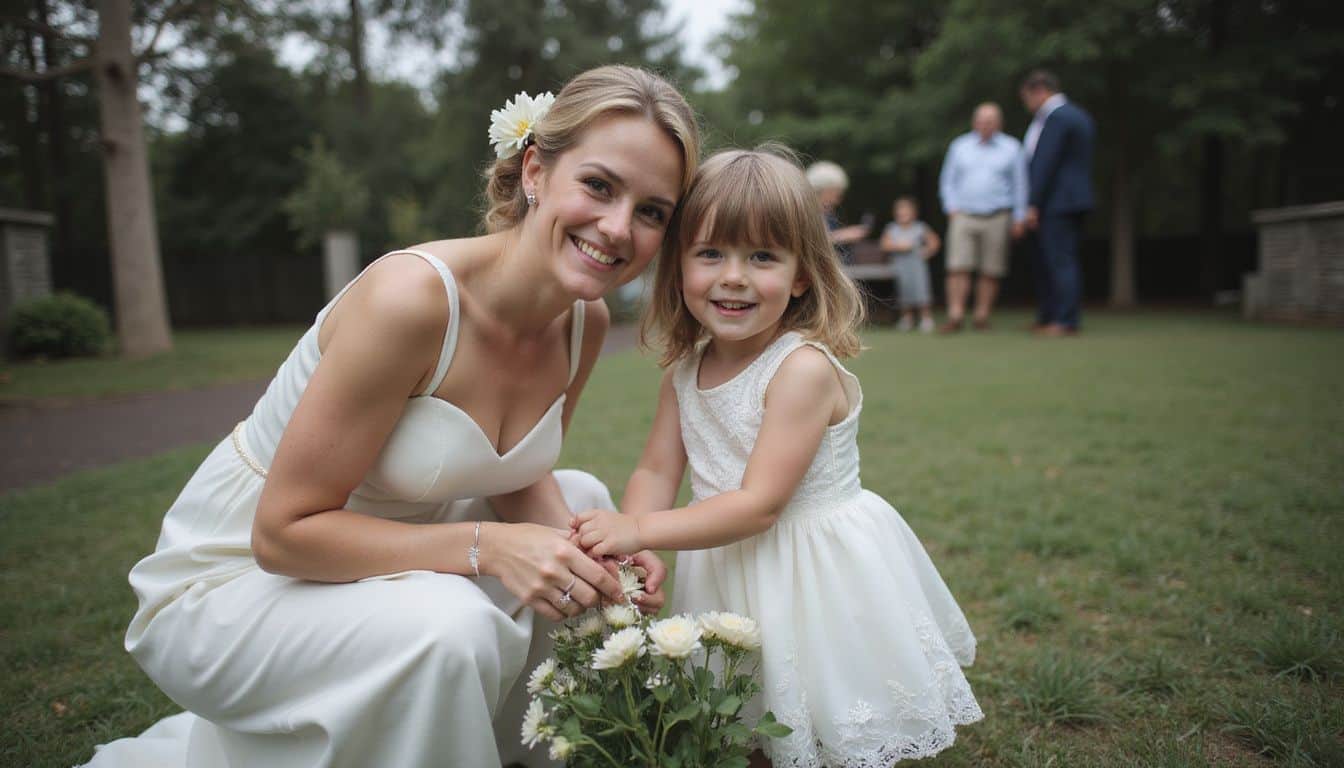Picking the right flower girl age limit can feel tricky for brides-to-be. The usual ages range from three to eight years old, but some couples choose older or even adult flower girls.
In this blog, you’ll find simple tips to decide what’s best and include family members of all ages in your wedding ceremony plans. Keep reading for sweet ideas you won’t want to miss!
Key Takeaways
Flower girls typically range from ages 3 to 8—but there’s no set rule about age limits.
Kids under 3 might need extra support during the ceremony, such as riding in a decorated wagon or simply wearing a flower crown rather than tossing petals.
Girls between the ages of 9 and 12 usually lean toward other roles, like junior bridesmaids, readers at the ceremony, or helping out at the reception instead.
Today’s weddings often feature unique flower girl choices—like a grandma, a favorite pet, or even an adult friend—to spread petals down the aisle.
What really matters is the child’s comfort level, confidence, and readiness for the role—age alone isn’t the key factor.
Table of Contents
What Is the Age Limit for a Flower Girl?
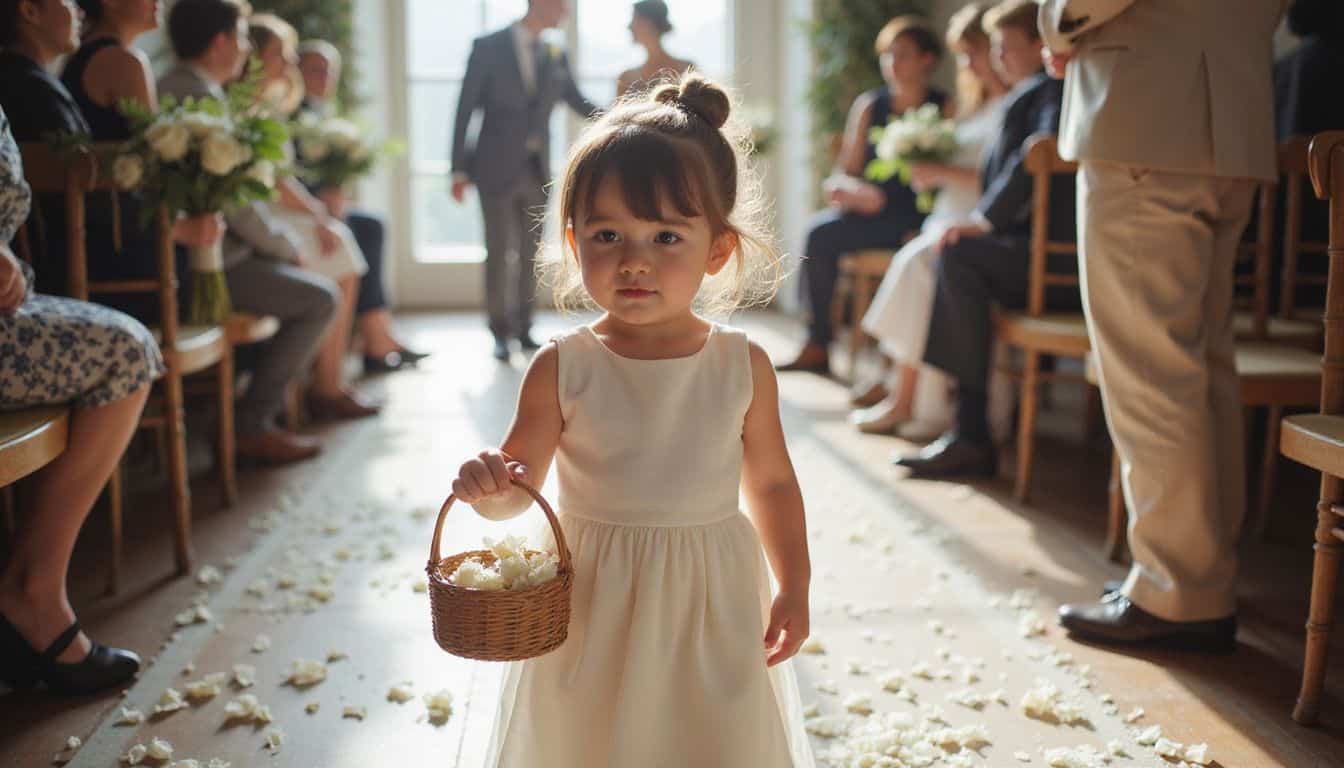
You might find the reality about flower girl age limits pretty surprising. Most weddings include flower girls around three to eight years old—but there’s no set rule. Kids at this age usually handle walking down the aisle and scattering petals from their baskets quite smoothly.
Brides often select this age range, viewing the flower girl role as a sweet symbol of growth from childhood into adulthood. Little girls offer that ideal mix of cuteness, charm, and ability to follow simple directions along the aisle.
Today, weddings often include flower girls beyond the usual ages, giving the tradition a fresh feel. It’s not unheard of now to see teenagers or even grandmas play this special part.
The main considerations here: the girl’s comfort, emotions, and readiness to handle this important duty. While searching for an adorable flower girl gown, think carefully about the girl’s age and what duties she’ll handle best.
Girls past eight years old sometimes prefer roles like junior bridesmaids instead of tossing petals down the aisle.
Recommended Age Range for Flower Girls
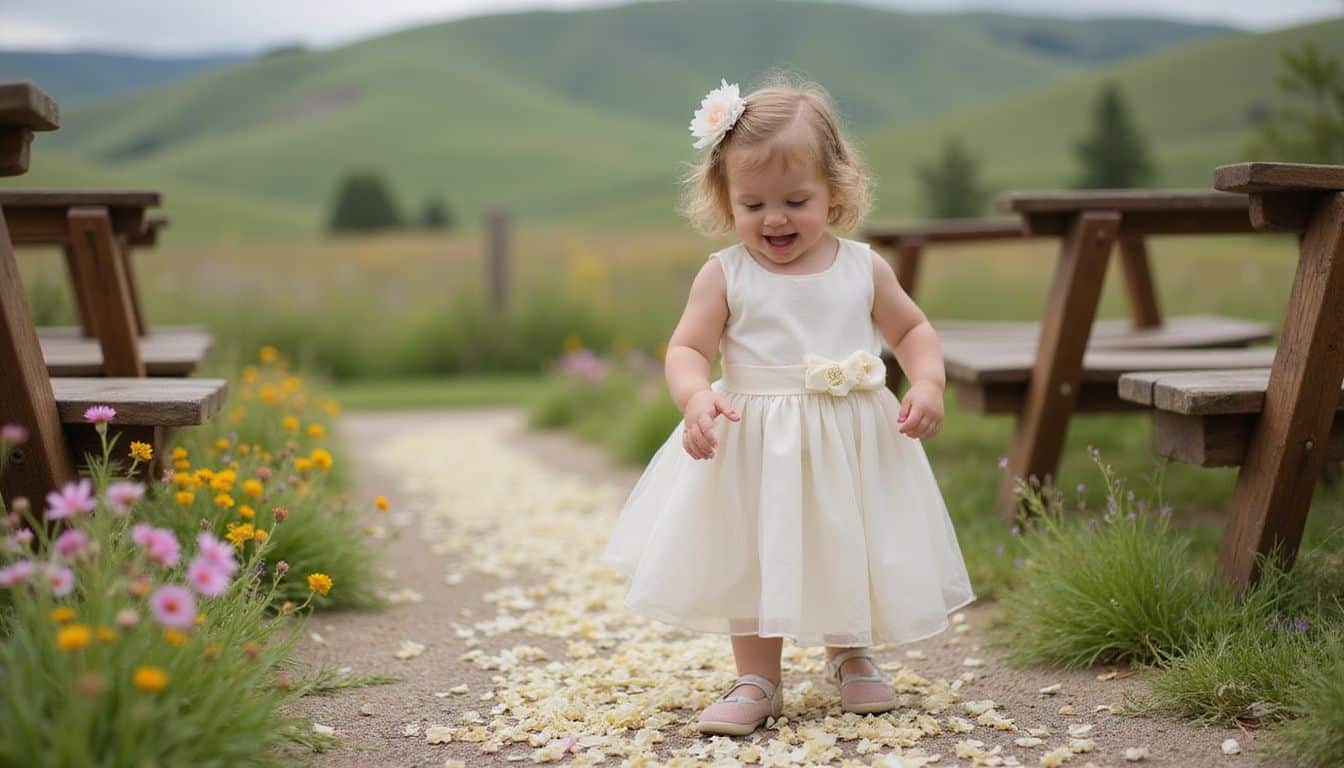
Choosing the right flower girl age range makes a big difference in how smoothly your wedding ceremony goes. Most couples find their best success with girls between ages three and eight, though this can vary based on the child’s personality and the wedding setup.
Youngest Age for a Flower Girl
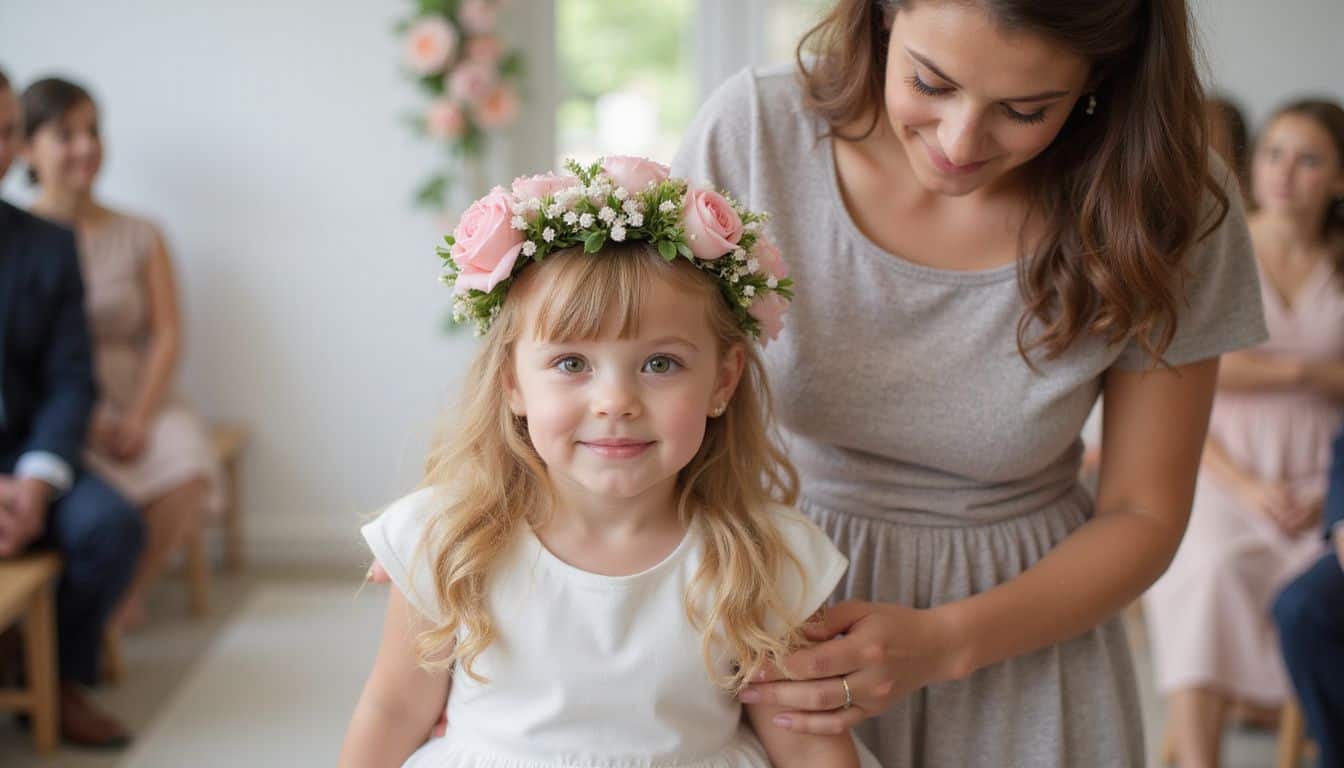
Most wedding planners suggest that three years old is the youngest practical age for flower girls. Little kids younger than this often have trouble following directions during the ceremony procession.
I’ve seen many three-year-olds do wonderfully, although they usually need extra help from parents or adults nearby. Kids under five, though adorable, may have unexpected stage fright or sudden outbursts halfway through.
The perfect flower girl balances cuteness with the ability to complete her special task.
If you do include younger toddlers, there are some creative tricks to keep things smooth. Some brides give toddlers pretty flower crowns instead of the usual petal tossing. Others have toddlers pulled along in nicely decorated wagons by bigger kids or even adults.
If you pick a younger child, just make sure you set aside extra rehearsal time. Little flower girls, around three to five years old, offer that sweet spot—adorable yet reliable enough to get down the aisle.
Ideal Age Range (3 to 8 Years Old)
Little girls between ages 3 and 8 are ideal flower girls for your wedding party. This age range hits the sweet spot—they’re naturally adorable, but still old enough to follow simple directions during the ceremony.
I’ve watched plenty of 5-year-olds charm entire crowds with their cute petal-tossing moves—the guests can’t stop smiling! Kids this age grasp how special their task is, but still have that sweet innocence that brightens up the mood.
Children between 3 and 8 easily manage simple duties like carrying tiny bouquets or scattering petals along the aisle. They’re mature enough to practice beforehand, yet young enough to melt everyone’s heart instantly.
Having flower girls this age adds cheerful energy to the event, without the extra work of supervising toddlers still too small for the role. Let’s look at a few quick points to help you pick the best flower girl for your special occasion.
Maximum Age for a Flower Girl
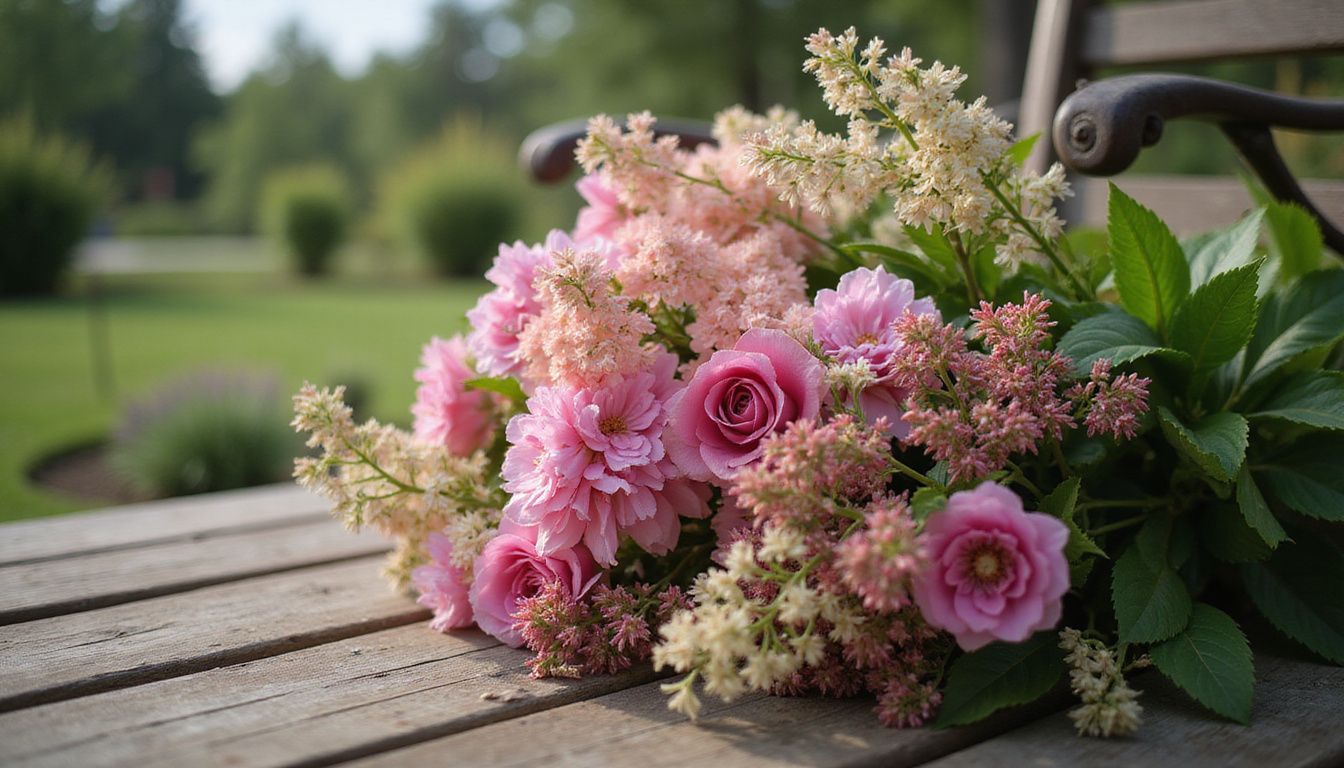
Flower girls typically retire their petal-tossing duties around the age of eight. This age limit makes sense, as older girls often begin to feel too grown-up for the role. Girls between nine and twelve years old usually prefer to serve as junior bridesmaids, rather than scattering petals down the aisle.
Wedding ceremonies generally involve younger children in these roles, while pre-teens often handle more mature tasks within the bridal party.
Yet, plenty of couples now choose to bend these guidelines, depending on their family circumstances. Your ten-year-old niece may still happily take on flower girl duties, as long as she enjoys the idea.
The key here—is her own ease and comfort during the event. Girls who feel they’re past the flower girl stage can join in other ways instead. They could assist with wedding invitations, for instance, or help the maid of honor tackle small tasks before the ceremony begins.
Factors Influencing the Age Limit
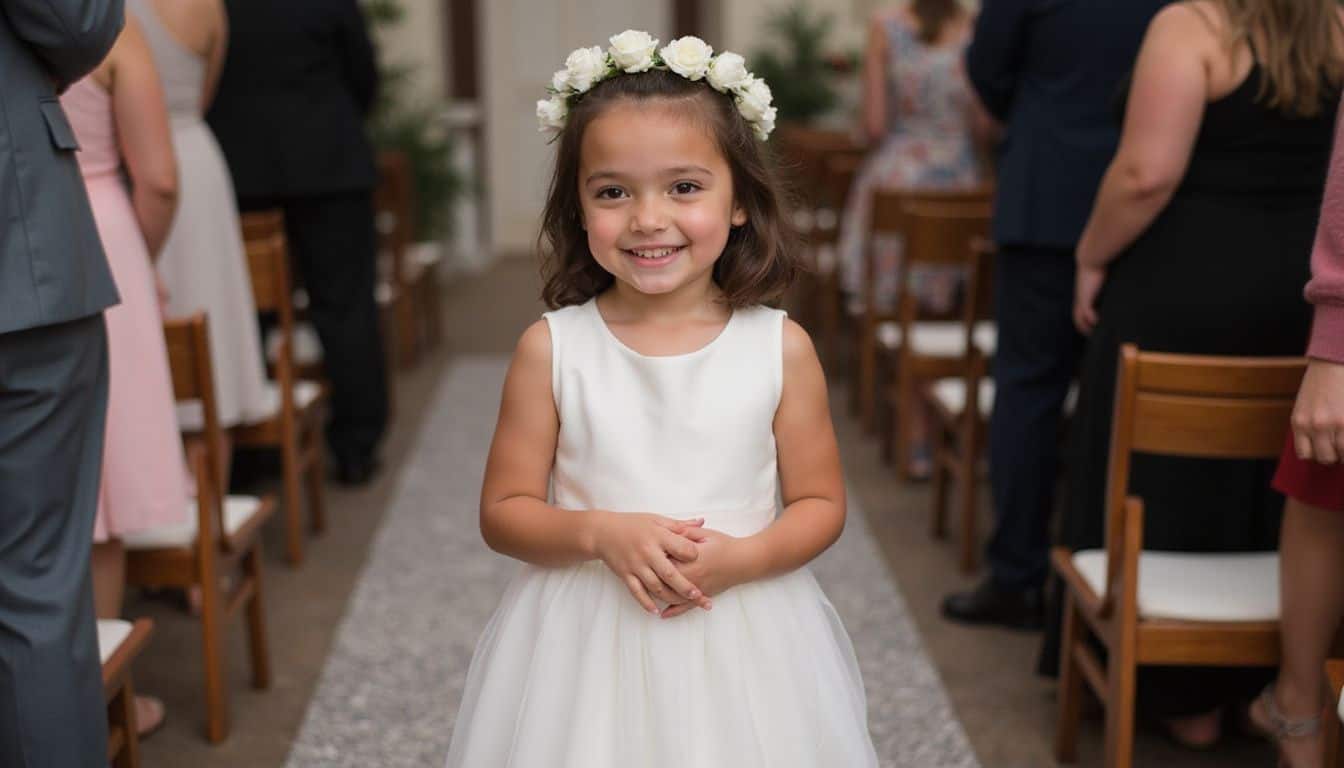
Several key factors shape the ideal age range for your flower girl, from her ability to walk down the aisle alone to how she handles being the center of attention. Read on to learn what to consider when picking the perfect little attendant for your big day!
Physical Appearance and Maturity
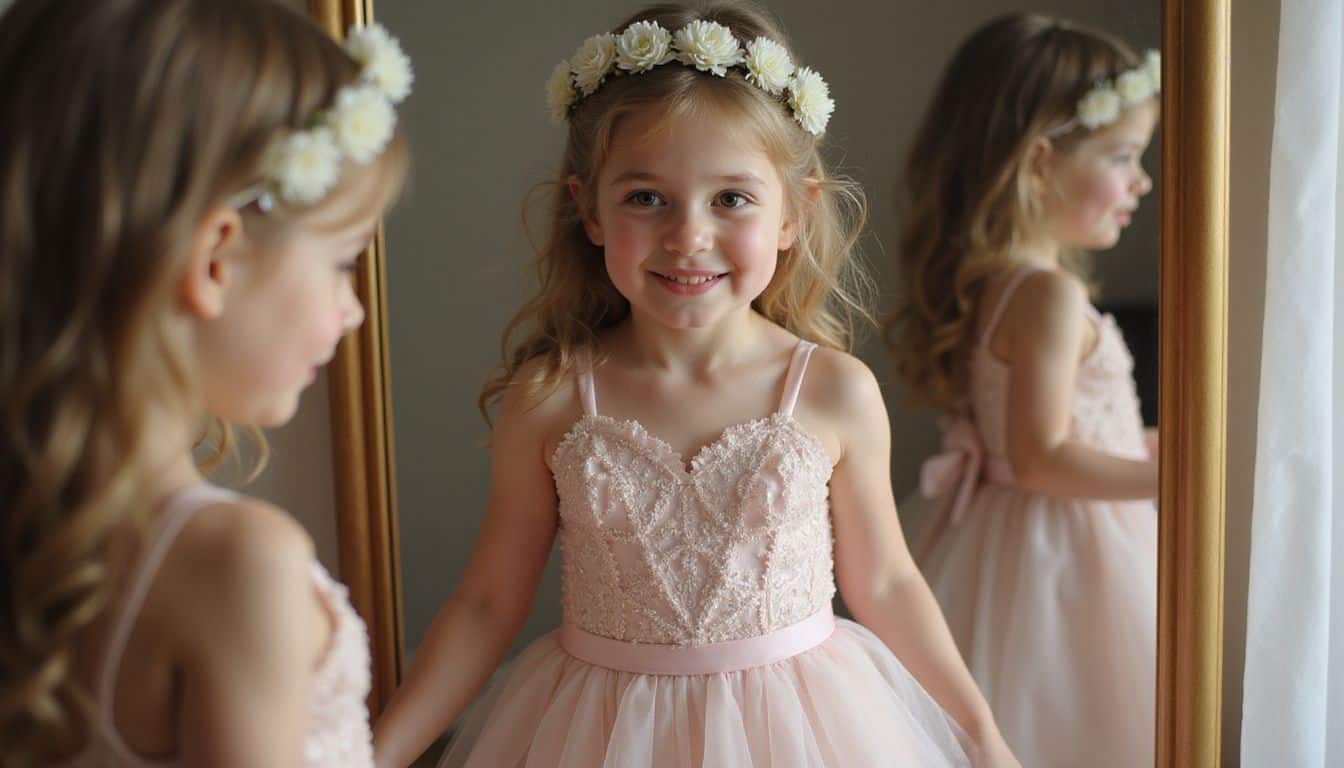
A child’s size and growth stage matter a lot when you’re choosing a flower girl. Little girls who already look older can seem out of place tossing petals down the aisle. I saw this happen at my cousin’s wedding—her 10-year-old flower girl looked more like a junior bridesmaid next to the other attendants.
The perfect flower girl looks adorable, follows simple instructions easily, and fits the overall bridal party style. Girls who look older may feel uncomfortable in super frilly dresses that younger kids adore—on the opposite end, very little ones can easily get nervous during a formal event.
The right flower girl brings innocence to your wedding day, regardless of her age.
Kids grow and develop differently, even if they’re the same age. Some 5-year-olds look closer to 7, while some 8-year-olds still have the charm and look of younger children. Brides on online wedding forums, like those from The Knot and Zola, often mention picking flower girls based on personality rather than age alone.
If you’re unsure about a little girl’s comfort level, think about choosing someone’s stepdaughter who already knows family events well, or ask a groomsman to gently guide her throughout the ceremony.
Emotional Readiness
Besides physical readiness, a flower girl’s emotions count plenty, too. Kids need to feel relaxed, safe, and calm standing before wedding guests during the ceremony. Emotional maturity makes a big difference in handling this special honor.
It’s always smart to check with parents about their daughter’s comfort level, confidence, and ability to walk down the aisle alone. Some little three-year-olds may feel shy or nervous, while others happily soak up the attention.
The wedding itself means many new faces, sounds, and activities. All this excitement can become too much for younger kids. Little ones who easily become upset or shy around people they don’t know well could have a tough time.
Still, most children between ages three and eight do fine once they clearly understand the job. Being excited about scattering flower petals can make a big difference in how smoothly the child does her part.
Sometimes, couples find that these little, unpredictable moments from flower girls add charm—turning unexpected distractions into sweet memories.
Child’s Comfort Level
Emotional readiness is key to helping your flower girl feel comfortable at your wedding. A child needs to feel confident in her role, so she can truly enjoy her walk down the aisle.
Some kids love the spotlight, happily tossing petals and smiling at guests—but others can feel anxious about the attention. Take note of how your child behaves in group settings before you decide on her role.
Does she light up and perform in front of family gatherings, or does she quietly cling to mom?
The setting for your wedding also makes a big difference. A busy destination wedding in an unfamiliar place can easily overwhelm a young child. On the other hand, familiar surroundings or knowing the wedding party beforehand can help her feel safe and calm.
Be sure her dress fits comfortably, isn’t itchy, and lets her move around freely. Comfy clothing lets her concentrate on having fun in the ceremony instead of worrying about scratchy material or tight sleeves.
Pairing your flower girl with a ring bearer she already knows often helps her feel more relaxed—a buddy system can boost her confidence and put her at ease.
Alternative Roles for Older Girls
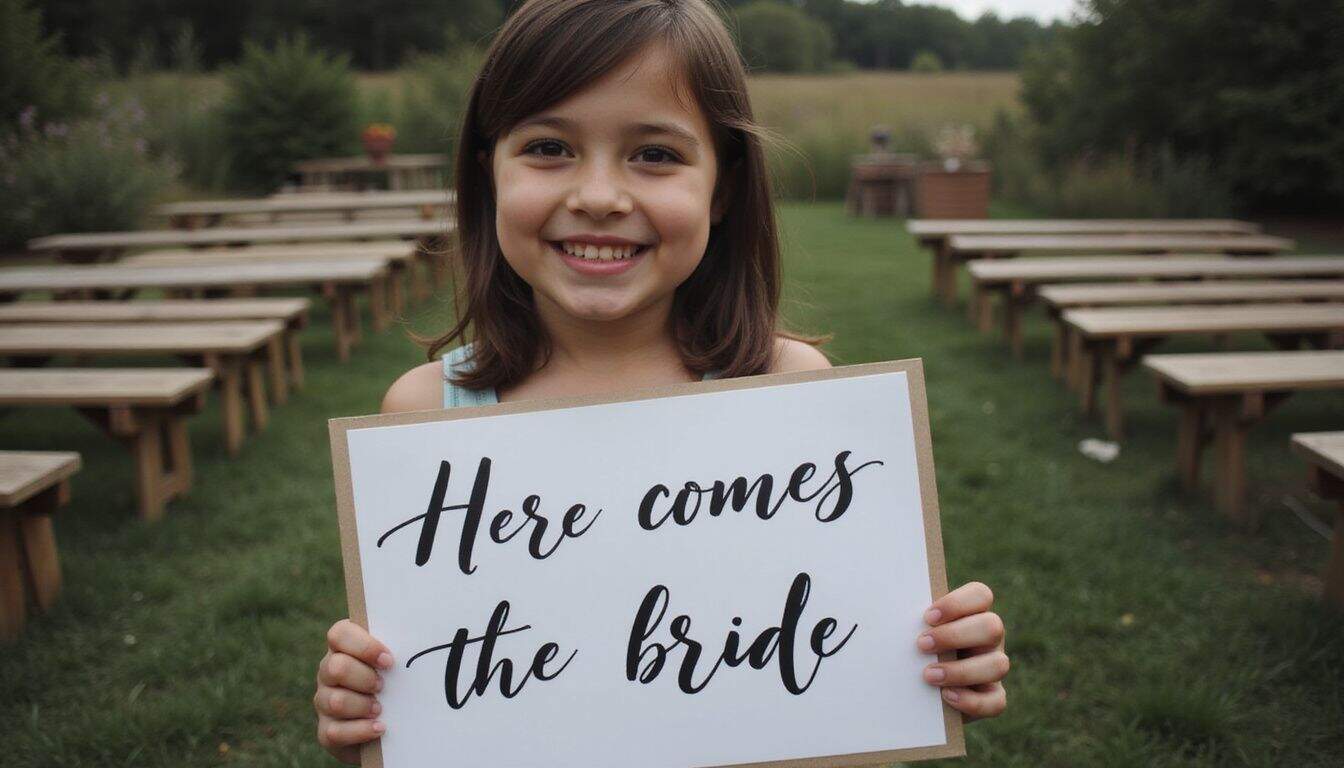
Older girls can still shine at weddings without tossing petals. We offer exciting options that honor their age and make them feel special in the celebration.
Junior Bridesmaid
Girls aged 10 to 15 make ideal junior bridesmaids for your wedding. These young ladies bridge the gap neatly between adorable flower girls and adult bridesmaids. My sister had two junior bridesmaids who went dress shopping with us, and even helped stuff welcome bags right before the event.
Their outfits matched the wedding’s colors perfectly, featuring stylish yet age-suitable designs that let them feel special without seeming overly grown-up.
Junior bridesmaids also handle real responsibilities during wedding preparations. They can manage guest books, pass out ceremony programs, or help the bride adjust her wedding train.
Most brides invite these younger attendants to join events like bridal showers or casual pre-wedding lunches. A big plus is that junior bridesmaids feel valued and involved, all while staying youthful and carefree.
Many weddings now include junior bridesmaids as important figures in the ceremony procession—giving everyone delightful, lasting memories.
Ceremony Reader
Ceremony readers can bring a meaningful, personal touch to your wedding celebration. This role fits perfectly for young girls who’ve grown out of being flower girls, yet still want a special role in your big day.
A teenage reader can share a poem, a lovely passage, or even a heartfelt blessing during your ceremony. At my sister’s wedding, my niece embraced this role beautifully—her clear, confident voice filled the venue as she shared a poem about love.
Guests still mention how her reading brought warmth and personality to the celebration.
Giving an older child a reading role honors their growth while keeping them involved in your special day.
Many couples now choose ceremony readers of different ages to play a part in their wedding procession. This trend offers an easygoing alternative to traditional jobs like ring bearer or groomsmen, giving you greater freedom and choice.
The role allows older girls to dress similar to your bridal party without the full duties expected of actual bridesmaids. You could even add extra tasks for ceremony readers, like handing out programs or helping guests find their menu cards.
For extra ideas on personalizing your ceremony, visit these wedding songs selected to match beautifully with readings.
Reception Assistant
Older girls can take on the fun role of reception assistants at weddings. It’s a special assignment that lets them help out during the party after vows are exchanged. These assistants might hand out wedding programs, guide guests toward the guest book, or collect small gifts and cards.
My niece took on this role last summer—and absolutely loved it. She felt proud and grown up serving cake slices to family and friends.
This job works perfectly for older children who no longer fit the flower girl role but still want an important part in the celebration. Wedding planners often suggest positions like these to help kids feel included and valued during the festivities.
Girls can wear lovely dresses that coordinate with wedding colors, without having to dress like younger flower girls. It’s a great way to stay involved, create fun memories, and feel more connected on a special day.
Tips for Including Younger Flower Girls

Tiny flower girls need extra care to shine on the big day. Smart planning helps young participants feel at ease while they toss petals down the aisle.
Assigning Simple Duties
Flower girls perform best with easy, clear tasks. My sister’s wedding taught me this lesson after the four-year-old flower girl got overwhelmed by too many instructions. Give young helpers a single, simple job like gently tossing petals along the aisle.
Some brides prefer giving flower girls a small bouquet to hold or a cute sign reading “Here Comes the Bride”. The idea is to let each child feel important and comfortable, without added pressure.
For weddings held far from home, tasks should stay even simpler, since little ones might already feel tired from traveling.
Practice really matters for these little helpers. During wedding rehearsals, let the flower girls run through their simple jobs several times—this helps them feel confident. My cousin matched her flower girl with an equally young ring bearer, making both kids feel more relaxed and secure.
On the wedding day itself, some kids might forget their duties, and a gentle word from a familiar adult can quickly ease their nerves. Wedding planners often suggest putting a small treat at the aisle’s end as a fun reward for the flower girl’s hard work.
Providing Support During the Ceremony
Young flower girls often need a bit of extra help at weddings. Consider pairing your little attendant with an older cousin or teen, who can gently guide her down the aisle. This buddy system can ease fears, especially for girls under age five who may get nervous walking alone.
You can also seat a parent in the front row; seeing a familiar face nearby can calm your little helper’s worries. A wedding planner may even place discreet tape marks along the aisle to show exactly where to pause or gently toss flower petals.
Props can also offer comfort and distraction during the ceremony. For example, a decorated basket from Amazon.com gives small hands something easy—and cute—to hold onto. Some couples choose to tweak tradition, letting the young flower girl sit with her parents after walking down the aisle.
This works especially well at destination weddings, where little ones might quickly get tired from all the excitement. For indoor weddings, hold a practice run at the actual venue a day or two beforehand.
A quick rehearsal can greatly boost your flower girl’s confidence, making her more comfortable in her special role.
Managing Older Flower Girls
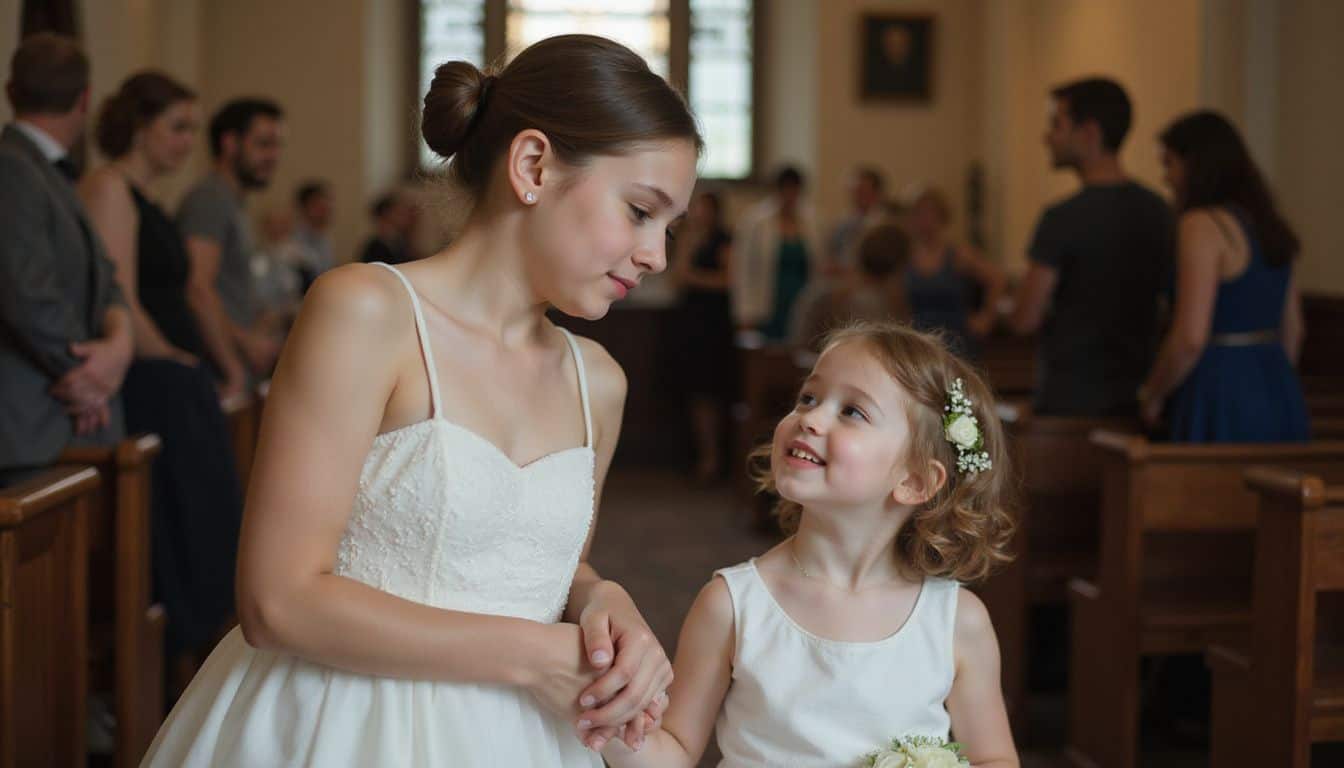
Older flower girls need special roles that match their age and skills. You can give them more tasks like helping younger flower girls or carrying a special item during the wedding march.
Adjusting Responsibilities
Girls who are a bit older can still have special roles as flower girls. You can ask them to guide younger flower girls down the aisle, or help carry your wedding dress train during the procession.
These thoughtful tasks make older flower girls feel valued and add charm to the ceremony. Many brides also invite junior flower girls to help with smaller roles, like holding rings during the ceremony.
Even if they’re past the petal-tossing stage, older flower girls still want to feel included. Consider speaking with their parents to learn what they’re comfortable doing. For example, girls around 8 or 9 years old often enjoy handing out programs or helping guests find their seats.
The main idea is to pick tasks that match each girl’s confidence and maturity—this lets them feel special, involved, and happy to be part of your big day.
Ensuring Their Participation Feels Special
Older flower girls deserve roles that match their age and abilities. I’ve found giving them something special to hold—like a cute keepsake box for petals—can really make them feel important.
Another fun idea is letting older girls guide younger flower girls down the aisle. Include them in dress shopping trips, too, so they feel excited and involved in the planning. Regularly praise their hard work, and offer small treats during rehearsals as a thank you.
My niece couldn’t stop smiling when we gave her a “flower girl assistant” sash to wear during the ceremony.
Creating a fun and relaxed experience counts as much as the actual responsibilities. Visit the venue with your flower girl before wedding day arrives—this can calm nerves about walking down an unfamiliar aisle.
Set up practice aisles at home, decorated just for fun, to help her feel confident. Many brides today give older flower girls tasks often reserved for adults, like handling wedding rings or managing the guestbook.
Wedding traditions today offer flexible and creative roles fitting nearly any age. Next, we’ll check out some fresh and creative flower girl roles shaking up wedding traditions.
Modern Trends in Flower Girl Roles
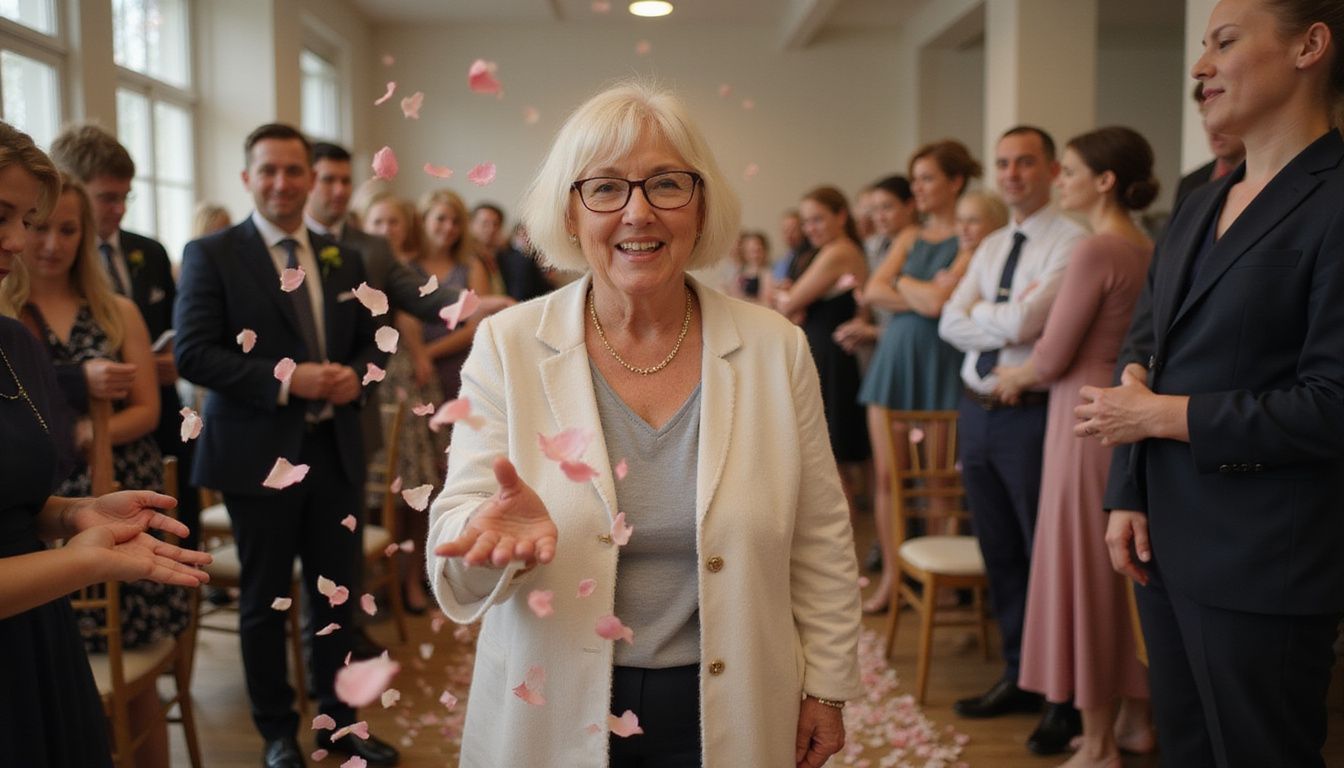
Modern weddings break the old rules about flower girls. Many couples now pick grown-ups, grandmas, or even pets to toss petals down the aisle.
Non-Traditional Flower Girls
Wedding traditions keep shifting—and today’s couples are loving fresh, creative twists. Instead of sticking to young children as flower girls, many now opt for “Alternative Flower Girls“.
Your own furry friend can even take part, carrying rings down the aisle with style and charm. Last spring, at my cousin’s wedding, her Labrador stole everyone’s hearts as he trotted past guests—basket attached neatly to his collar—earning nothing but smiles and laughs.
“Flower grannies” offer another delightful spin, adding both warmth and humor to the celebration. Imagine your grandma scattering petals with a playful flair, guests cheering her every move.
It’s a touching way to honor family members, making the ceremony unique and memorable. Brides today also often involve brothers or male friends as flower attendants. Wedding roles are no longer tied strictly to tradition, inviting everyone close to you into meaningful wedding moments.
Flexible Age Expectations
Today, many couples break tradition and choose flower girls beyond the usual age range. Instead of the common three-to-eight-year-olds, weddings now often feature flower girls of various ages.
This flexible trend allows families to include special young people they love, regardless of traditional limits. Some brides even invite grandmas—or beloved aunts—to toss flower petals down the aisle!
The age guidelines for flower girls continue to loosen, as couples create celebrations that reflect their preferences. Girls once viewed as “too old” for the role can now comfortably take part, if they want to.
This approach complements today’s relaxed views about ring bearers too. According to XO Group, wedding parties now emphasize meaningful roles over strict age rules. Your big day should showcase your personal style, not depend on outdated traditions about scattering rose petals.
How Will Flower Girl Age Guidelines Evolve in 2025?
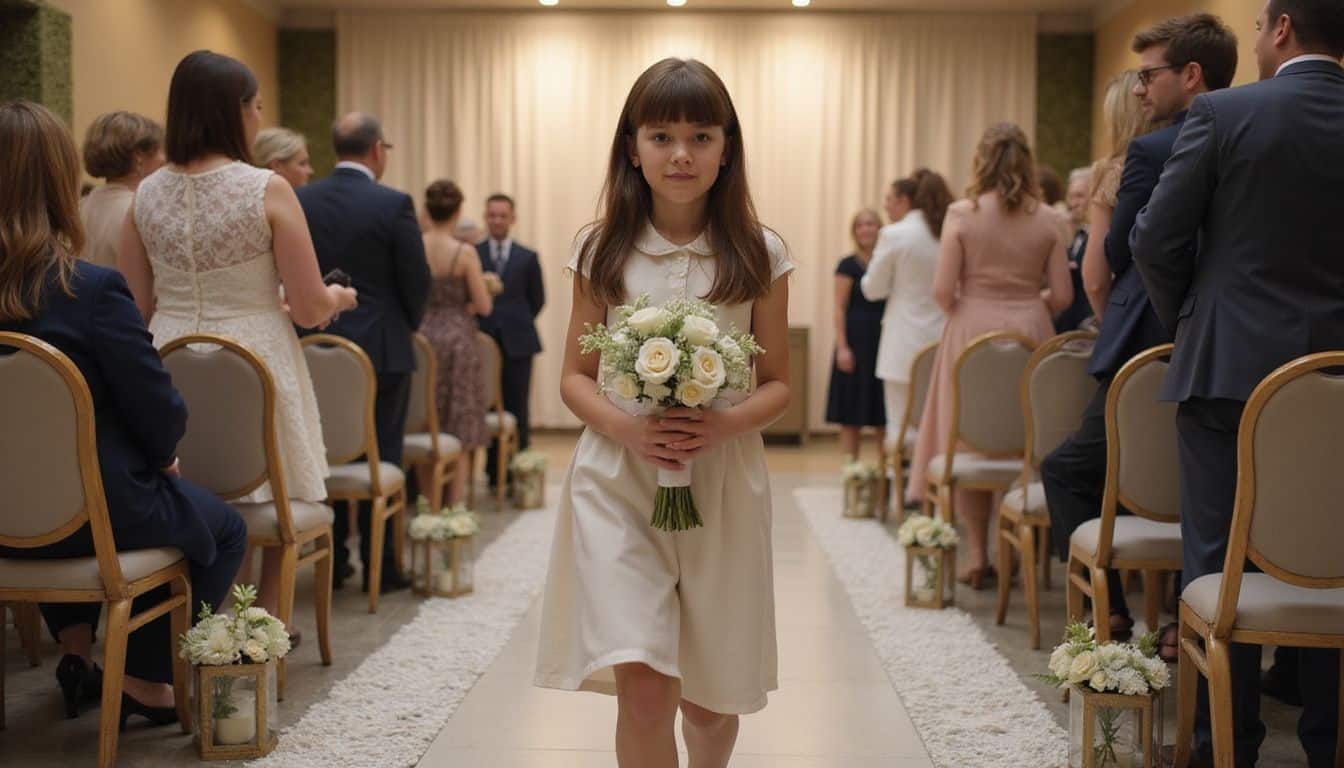
Wedding traditions are quickly evolving—and flower girl roles will see major shifts by 2025. Many couples now select flower girls of all ages for their wedding procession, not just young children.
Even grandmothers scattering petals down the aisle has become a charming new trend at modern weddings. Strict age limits—once common between 3 and 8 years—are fading out, as brides prioritize personality instead.
This fresh approach helps families involve special people without stressing over outdated customs.
Future weddings will center more on what feels right for each couple’s personal story. Older girls who feel awkward tossing petals can instead choose blended roles tailored to their age and ability.
For instance, a 12-year-old could hold flowers or support younger ring bearers, helping them through the ceremony. Some brides already include teen flower attendants dressed in styles between adult bridesmaid gowns and fluffy little-girl dresses.
Such flexible options make planning smoother, simpler, and far more personal, allowing everyone to enjoy the big day comfortably.
People Also Ask
What is the ideal age for a flower girl in a wedding processional?
The best age for a flower girl is usually around 3 to 8 years old. Most couples choose girls within this age range since they’re old enough to follow simple directions but still young enough to add charm to the ceremony.
Should the flower girl and ring bearer be the same age?
They don’t need to be the same age. Ring bearers commonly range from 4 to 8 years, but matching ages isn’t important. Just be sure each child feels comfortable handling their specific role during the ceremony.
How should I dress the flower girl compared to other wedding party members?
Flower girl dresses usually coordinate nicely with the bride’s gown. Boys in the ceremony often wear miniature tuxedos or formal outfits. Try to match these outfits to your wedding colors and overall theme.
Can I have more than one flower girl in my wedding?
Absolutely—many couples include two or more flower girls. If you’ve got several nieces or young family members you’d love to involve, spreading flower girl duties among them is a great idea.
References
https://www.theknot.com/content/flower-girl-duties-in-detail
https://www.zola.com/expert-advice/what-is-the-appropriate-age-of-a-flower-girl
https://melbourneentertainmentco.com.au/age-for-a-flower-girl-or-ring-bearer/ (2024-08-21)
https://www.younghipandmarried.com/15-alternatives-to-flower-girls-rings-boys/
https://bridebook.com/uk/article/introduction-flower-girl (2023-10-16)
https://www.vogue.com/article/what-is-a-flower-girl
https://texasweddings.com/blog/trend-spotted-alternative-flower-girls/
